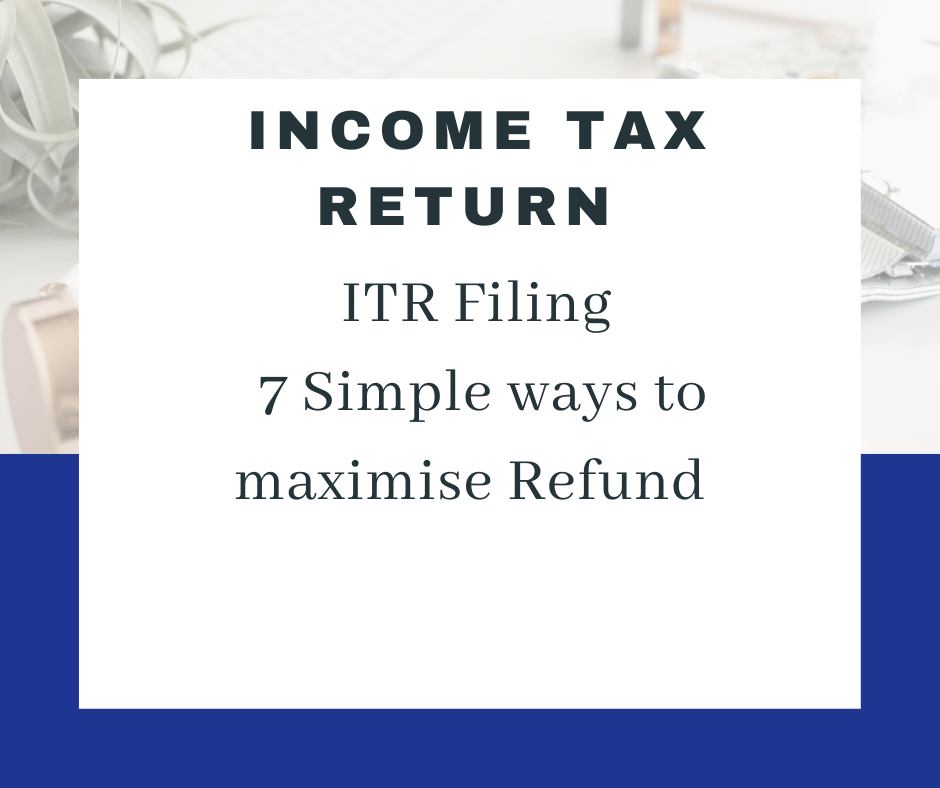You Should file your Income Tax Return return before 31st July to avoid Penalty

July 31st is the due date to file the Income Tax Return (ITR) for Financial Year 2022-23 assessment Year 2023-24. To avoid last minute rush it is advisable to file the ITR atleast 1 week in advance.
Those Tax payers who has paid tax or whose tax was deducted at source and their overall tax liability is less than tax paid or deducted are eligible for refund.
In case of most Salaried assessees and senior citizen this occurs due to TDS deduction on their interest from bank account and income from other sources.
Following are some points which all tax payers should take care to get refund on time.
1. Check Your AIS before filing Income Tax Return
AIS or Annual Information statement is a detailed summary of Taxpayer’s income reported by various banks, institutions or companies. Such entities are required to report income earned by their clients customers as per income tax act.
To ensure return is processed by the department on time. It is important that, Tax Payer reconciles this amount with his own bank statements. In case of any discrepancies Tax Payer can dispute the amount on income tax portal itself. Department is very prompt in sending queries back to entity who has reported such disputed transaction.
2. Select the correct regime while ITR filing
Tax Payer has the option to select one the two regimes of Income tax.
The first is the old regime which is taxed under following slabs
| Total Income (INR) | Rate of Tax |
| Upto – Rs 250000/- | 0% |
| 250000-500000 | 10% |
| 500000-1000000 | 20% |
| 1000000 and above | 30% |
Here the main advantage is that, the tax payer get deductions against Insurance and Mediclaim that he purchases. This deduction has an upper cap to it.
The second is the new regime which is taxed at a lower rates. However, it doesn’t has deductions of old tax regime
| Total Income (INR) | Rate of Tax |
| Upto Rs 300000 | Nil |
| 300000 to 600000 | 5% |
| 600000 to 900000 | 10% |
| 900000 to 1200000 | 15% |
| 1200000 to 1500000 | 20% |
| 1500000 and above | 30% |
3. File the Income Tax Return before due date
It is important to file your ITR before the due date. This is the most important step to ensure in time refund
If the return is not filed within due date it may attract penalties.
Due date is prescribed u/s 139(1) of the Income tax Act. Unless extended the due for filing of return for Individuals and HUFs is 31st July.
4. Claim Correct Deductions and Exemptions in your ITR
Tax Payers in their own interest should determine the eligible deduction and exemptions. Deductions and exemptions reduces the amount of income taxable and raises the amount that can be refunded.
Deduction on Insurance Premium, Investment in PPF and Sukanya Samriddhi scheme can be taken u/s 80C of Income Tax Act. Mediclaim insurance premium can be claimed u/s 80D and NPS can be claimed u/s 80CCD.
Further, Tax Payer should note that they are eligible for standard deduction on their salary and also their income from House property.
Tax Payer while filing ITR should go beyond form 16 and identify areas of Tax Savings investments which are allowed as deductions from their Income.
5. Validate your Bank Account
Verify and authenticate your bank account and ensure that it is validated in a correctly on the income tax portal.
It is very important to go through the the validation process since tax authorities will only credit refunds to the accounts that are authenticated on e-filling portal. The validation of your bank account should precede the Income Tax Return Filing.
6. Link Your Aadhar to PAN and also your registered Mobile Number
Aadhar and PAN linking is mandatory from 1st July, 2023. If Aadhar and PAN are not linked the PAN will become in-operative. The consequences of in-operative PAN are as follows:
- Refund will not be processed.
- Till the time PAN is in-operative no interest will be earned by the Tax Payer.
- TDS/TCS will be collected at a higher rate
7. Verify your e-return
An individual should verify his return within 30 days of filing.
In case return is not validated it will be considered as invalid and the tax payer will be required to re-submit the return.
E-verification can be done in 6 ways. The simplest way is to verify with the OTP on your mobile number linked with your Aadhar. The other methods include electronic verification code via bank account and EVC from Bank ATM.
